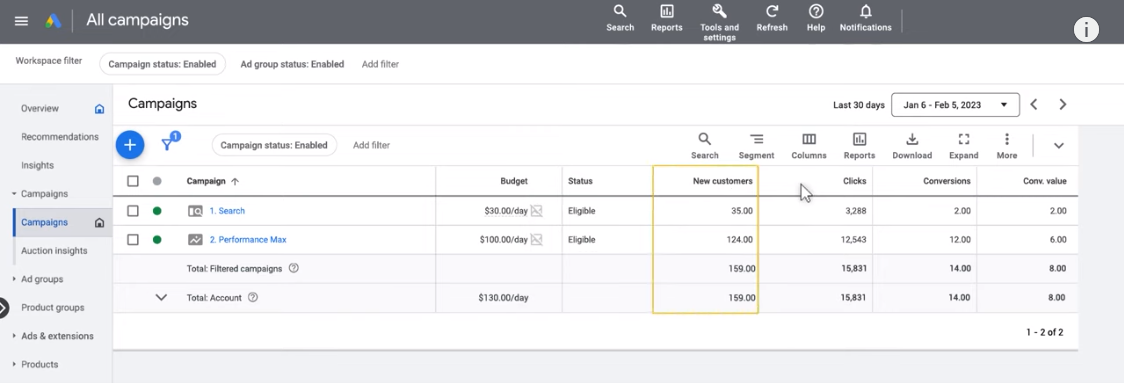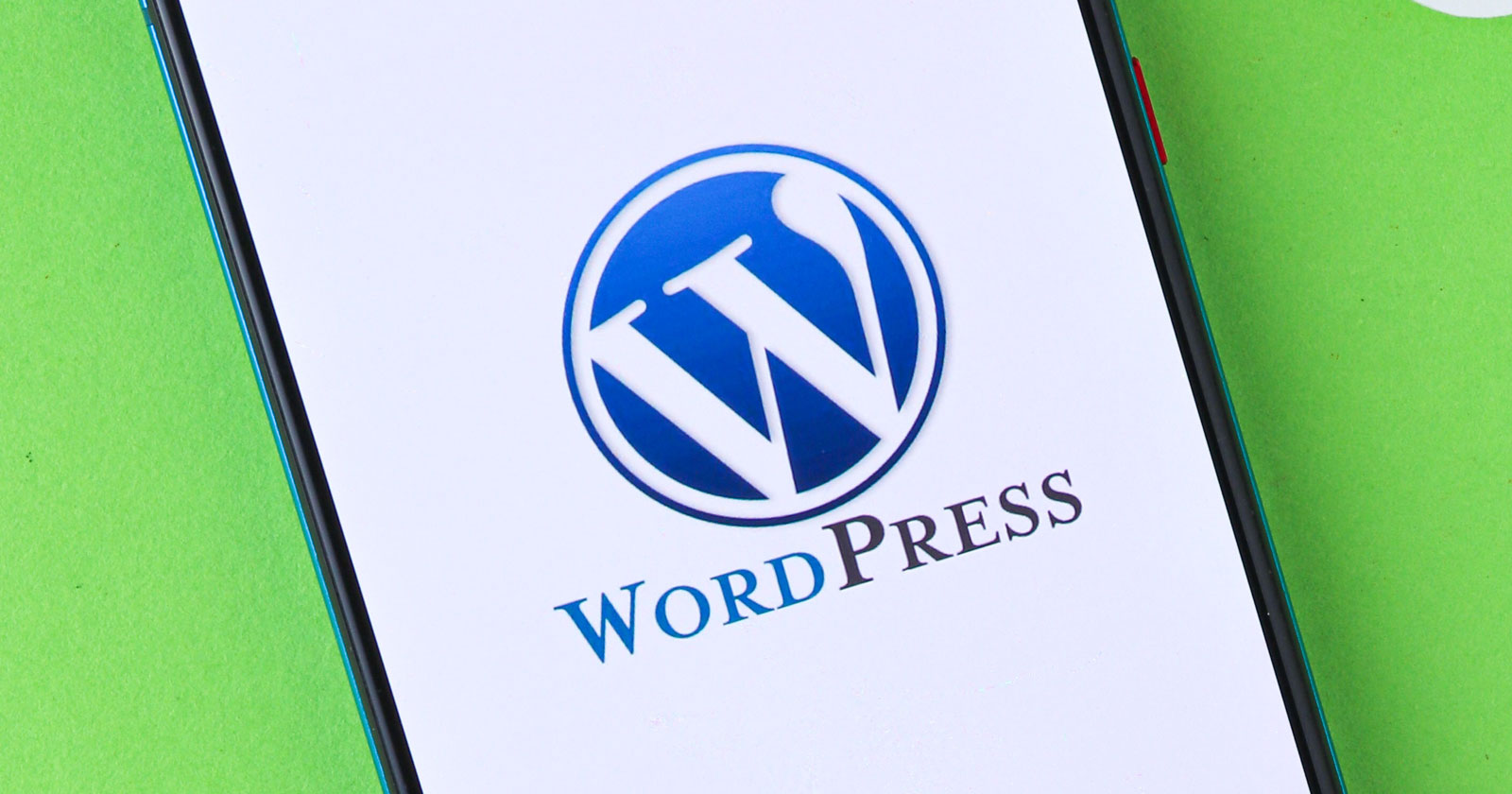SEO
Setting New Customer Acquisition Goals

Google recently rolled out its newest goal type to advertisers: customer acquisition goals.
The customer acquisition goal efficiently finds new customers through different Google Ads campaign types based on marketing objectives.
In its recent tutorial video, Google broke down how the new customer acquisition goal functions and modes of support.
How The Customer Acquisition Goal Works
New customers are determined via three sources of data:
- Customer Match lists (first-party data)
- Google tag
- Auto-detection signals
Google supports two different customer acquisition modes:
- New Customer Value mode. Bid higher for new customers than for existing customers. The retail and online sales objectives are supported with this option.
- New Customer Only mode. Only bid for new customers. The retail, online sales, and lead gen objectives are supported with this option.
The customer acquisition goal can be set up for new and existing campaigns.
Setting Up The Goal For New Performance Max Campaigns
Selecting the customer acquisition goal for a new Performance Max campaign happens during the campaign construction.
First, select Performance Max as the campaign type and name the campaign.
The second step is to set the bid, which is where the new acquisition goal type is.
If Using the ‘New Customer Value’ Mode
Once the customer acquisition box above is checked, it will prompt the advertiser to choose from existing audience segments.
After the audiences are chosen, a value must be assigned for customer acquisition.
The value is assigned to new customer conversions, which helps Smart Bidding to optimize towards new customers.
 Image Credit: Google, YouTube.com, April 2023
Image Credit: Google, YouTube.com, April 2023Google recommends setting the value to a new customer’s expected future organic revenue for optimal results.
Once the value is set, continue setting up the Performance Max campaign as usual.
If Using the ‘New Customer Only’ Mode
The process of adding the customer acquisition goal is the same as above, except choosing this option instead:
- “Only bid for new customers.”
This narrows the targeting down to finding new customers only.
Google recommends setting up a separate campaign for existing customers to not narrow the reach too much. ROAS targets should differ between the two campaigns based on user behavior and historical performance.
Setting Up The Goal For Existing Campaigns
The customer acquisition goal is available for these existing campaign types:
- Performance Max
- Search
- Video Action
#1: Configure Customer Acquisition Goal in Conversions
To do this, navigate to “Tools & Settings” >> “Conversions” >> “Customer Acquisition – Set up”
 Image credit: Screenshot taken by author, April 2023
Image credit: Screenshot taken by author, April 2023The goal setup is the same as the previous instructions:
- Select existing customer lists
- Set the value assigned to customer acquisition
This is now set up at the account level and available to add to existing campaigns.
#2: Configure Customer Acquisition Goal in Campaign
First, choose the campaign that will be using the new goal type. Click on the “Settings” tab on the left-hand menu bar.
Then, select the “customer acquisition” box, which will open up the goal panel.
 Image credit: Google, YouTube.com, April 2023
Image credit: Google, YouTube.com, April 2023Finally, select the appropriate customer acquisition type for the particular campaign, then click “Save.”
How To Measure New Customer Performance
The reporting upgrades are among the most exciting updates about the customer acquisition goal type.
A new column for “New customers” is available in the Google Ads online interface.
 Image credit: Google, YouTube.com, April 2023
Image credit: Google, YouTube.com, April 2023The ‘New customers’ column shows the number of new customers acquired by each campaign type using the goal.
In addition to the new reporting available, it helps calculate key metrics such as Customer Acquisition Cost.
Summary
Google’s newest customer acquisition goal helps advertisers be more strategic with their marketing dollars.
By balancing the need for new customers and key business metrics such as ROAS or profitability, the customer acquisition goal helps drive new customers while still hitting those goals.
Watch the entire Google Ads tutorial here.
Featured Image: Andrey_Popov/Shutterstock
SEO
Executive Director Of WordPress Resigns

Josepha Haden Chomphosy, Executive Director of the WordPress Project, officially announced her resignation, ending a nine-year tenure. This comes just two weeks after Matt Mullenweg launched a controversial campaign against a managed WordPress host, which responded by filing a federal lawsuit against him and Automattic.
She posted an upbeat notice on her personal blog, reaffirming her belief in the open source community as positive economic force as well as the importance of strong opinions that are “loosely held.”
She wrote:
“This week marks my last as the Executive Director of the WordPress project. My time with WordPress has transformed me, both as a leader and an advocate. There’s still more to do in our shared quest to secure a self-sustaining future of the open source project that we all love, and my belief in our global community of contributors remains unchanged.
…I still believe that open source is an idea that can transform generations. I believe in the power of a good-hearted group of people. I believe in the importance of strong opinions, loosely held. And I believe the world will always need the more equitable opportunities that well-maintained open source can provide: access to knowledge and learning, easy-to-join peer and business networks, the amplification of unheard voices, and a chance to tap into economic opportunity for those who weren’t born into it.”
Turmoil At WordPress
The resignation comes amidst the backdrop of a conflict between WordPress co-founder Matt Mullenweg and the managed WordPress web host WP Engine, which has brought unprecedented turmoil within the WordPress community, including a federal lawsuit filed by WP Engine accusing Mullenweg of attempted extortion.
Resignation News Was Leaked
The news about the resignation was leaked on October 2nd by the founder of the WordPress news site WP Tavern (now owned by Matt Mullenweg), who tweeted that he had spoken with Josepha that evening, who announced her resignation.
He posted:
“I spoke with Josepha tonight. I can confirm that she’s no longer at Automattic.
She’s working on a statement for the community. She’s in good spirits despite the turmoil.”
Screenshot Of Deleted Tweet
Josepha tweeted the following response the next day:
“Ok, this is not how I expected that news to come to y’all. I apologize that this is the first many of you heard of it. Please don’t speculate about anything.”
Rocky Period For WordPress
While her resignation was somewhat of an open secret it’s still a significant event because of recent events at WordPress, including the resignations of 8.4% of Automattic employees as a result of an offer of a generous severance package to all employees who no longer wished to work there.
Read the official announcement:
Featured Image by Shutterstock/Wirestock Creators
SEO
8% Of Automattic Employees Choose To Resign

WordPress co-founder and Automattic CEO announced today that he offered Automattic employees the chance to resign with a severance pay and a total of 8.4 percent. Mullenweg offered $30,000 or six months of salary, whichever one is higher, with a total of 159 people taking his offer.
Reactions Of Automattic Employees
Given the recent controversies created by Mullenweg, one might be tempted to view the walkout as a vote of no-confidence in Mullenweg. But that would be a mistake because some of the employees announcing their resignations either praised Mullenweg or simply announced their resignation while many others tweeted how happy they are to stay at Automattic.
One former employee tweeted that he was sad about recent developments but also praised Mullenweg and Automattic as an employer.
He shared:
“Today was my last day at Automattic. I spent the last 2 years building large scale ML and generative AI infra and products, and a lot of time on robotics at night and on weekends.
I’m going to spend the next month taking a break, getting married, and visiting family in Australia.
I have some really fun ideas of things to build that I’ve been storing up for a while. Now I get to build them. Get in touch if you’d like to build AI products together.”
Another former employee, Naoko Takano, is a 14 year employee, an organizer of WordCamp conferences in Asia, a full-time WordPress contributor and Open Source Project Manager at Automattic announced on X (formerly Twitter) that today was her last day at Automattic with no additional comment.
She tweeted:
“Today was my last day at Automattic.
I’m actively exploring new career opportunities. If you know of any positions that align with my skills and experience!”
Naoko’s role at at WordPress was working with the global WordPress community to improve contributor experiences through the Five for the Future and Mentorship programs. Five for the Future is an important WordPress program that encourages organizations to donate 5% of their resources back into WordPress. Five for the Future is one of the issues Mullenweg had against WP Engine, asserting that they didn’t donate enough back into the community.
Mullenweg himself was bittersweet to see those employees go, writing in a blog post:
“It was an emotional roller coaster of a week. The day you hire someone you aren’t expecting them to resign or be fired, you’re hoping for a long and mutually beneficial relationship. Every resignation stings a bit.
However now, I feel much lighter. I’m grateful and thankful for all the people who took the offer, and even more excited to work with those who turned down $126M to stay. As the kids say, LFG!”
Read the entire announcement on Mullenweg’s blog:
Featured Image by Shutterstock/sdx15
SEO
YouTube Extends Shorts To 3 Minutes, Adds New Features

YouTube expands Shorts to 3 minutes, adds templates, AI tools, and the option to show fewer Shorts on the homepage.
- YouTube Shorts will allow 3-minute videos.
- New features include templates, enhanced remixing, and AI-generated video backgrounds.
- YouTube is adding a Shorts trends page and comment previews.
-

 WORDPRESS3 days ago
WORDPRESS3 days agoWordPress biz Automattic details WP Engine deal demands • The Register
-
SEARCHENGINES5 days ago
Daily Search Forum Recap: September 30, 2024
-

 SEARCHENGINES7 days ago
SEARCHENGINES7 days agoGoogle Volatility With Gains & Losses, Updated Web Spam Policies, Cache Gone & More Search News
-

 SEO7 days ago
SEO7 days ago6 Things You Can Do to Compete With Big Sites
-
SEARCHENGINES4 days ago
Daily Search Forum Recap: October 1, 2024
-

 SEO6 days ago
SEO6 days agoAn In-Depth Guide For Businesses
-

 AFFILIATE MARKETING6 days ago
AFFILIATE MARKETING6 days agoNvidia CEO Jensen Huang Praises Nuclear Energy to Power AI
-

 AFFILIATE MARKETING6 days ago
AFFILIATE MARKETING6 days agoThis Minimalist Lamp Lets You Pick From 16 Million+ Lighting Colors for Maximum Productivity














